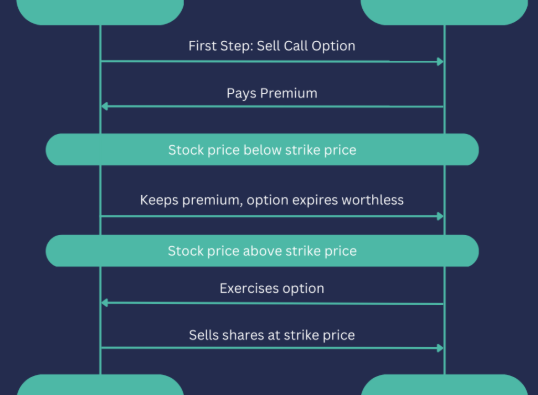
The Golden Crossover is a popular strategy in technical analysis used by traders to identify potential buy signals. This strategy occurs when a short-term moving average crosses above a long-term moving average, indicating a potential bullish trend. In this guide, we’ll walk you through how to implement the Golden Crossover strategy and explain how it can help you make more informed investment decisions.
What is the Golden Crossover?
The Golden Crossover is a bullish technical chart pattern that occurs when a shorter-term moving average, such as the 50-day moving average (MA), crosses above a longer-term moving average, typically the 200-day MA. This pattern signals that the short-term momentum is gaining strength and may indicate that the market is transitioning from a downtrend to an uptrend.
Traders widely use the Golden Crossover to identify potential buying opportunities, as it suggests that the stock’s price is likely to rise in the near future. A similar pattern, the Death Cross, occurs when the 50-day MA crosses below the 200-day MA, signaling a bearish trend. While the Golden Crossover indicates a shift toward growth, the Death Cross typically signals the start of a decline.
Identifying the Golden Crossover
To spot a Golden Crossover, you need to monitor the two moving averages—the 50-day and the 200-day. These moving averages represent the average closing prices over the past 50 and 200 trading days, respectively. When the 50-day MA crosses above the 200-day MA, it creates a Golden Crossover signal, often interpreted as a sign that the stock price will rise.
However, identifying a Golden Crossover is only part of the equation. To make an informed trading decision, consider other indicators, such as trading volume, to confirm the strength of the trend. A significant increase in volume during the crossover can validate the signal, suggesting that the trend is more likely to continue.
Examples of Golden Crossovers in Action
Let’s consider a hypothetical example: a stock’s 50-day moving average crosses above the 200-day moving average, signaling a potential bullish reversal. Traders notice this crossover and begin buying the stock, anticipating further price increases. As the stock price rises, trading volume also increases, providing additional confirmation that market sentiment is turning positive.
Historically, the Golden Crossover has been an effective indicator of market shifts. For instance, in 2009, following the global financial crisis, the S&P 500 experienced a Golden Crossover that marked the beginning of a long-term bull market. Similarly, another Golden Crossover occurred in 2016, signaling the start of a prolonged uptrend. In both cases, traders who acted on the signal saw significant gains.
How to Implement the Golden Crossover Strategy
Here’s a simple, step-by-step approach to using the Golden Crossover strategy:
Step 1: Select the Stock and Timeframe
Start by choosing the stock you want to trade. Look for stocks that show clear, consistent trends. Next, decide on the timeframe for your analysis—whether it’s daily, weekly, or monthly. The Golden Crossover can be applied to any of these timeframes, but it’s important to choose one that aligns with your trading goals.
Step 2: Calculate the Moving Averages
Next, you need to calculate the two moving averages. The 50-day moving average is the average closing price of the stock over the last 50 trading days, and the 200-day moving average is the average over the last 200 trading days.
To calculate these averages, simply add up the closing prices for each period and divide by the number of periods. For the 50-day MA, add the closing prices from the past 50 days and divide by 50. Repeat this process for the 200-day moving average.
Step 3: Look for Buy and Sell Signals
Once you have your moving averages calculated, look for buy or sell signals. A Golden Crossover occurs when the 50-day MA crosses above the 200-day MA, which is a bullish signal. This suggests that the stock’s price may begin to rise. On the other hand, a bearish signal is generated when the 50-day MA crosses below the 200-day MA, indicating that the price may start to fall.
Step 4: Confirm the Signal
It’s important to confirm the Golden Crossover with additional indicators. For example, check the trading volume during the crossover. Higher volume can validate the signal, as it suggests that there is strong market participation behind the price movement.
Step 5: Implement Risk Management
While the Golden Crossover is a helpful indicator, no strategy is foolproof. Implementing risk management practices, such as setting stop-loss orders, can help protect your investments if the stock moves in an unexpected direction.
Best Practices for Using the Golden Crossover
To make the most of the Golden Crossover strategy, here are a few tips:
- Use Additional Indicators
While the Golden Crossover is a reliable signal, it’s important to use other technical indicators alongside it, such as the Relative Strength Index (RSI) or the Moving Average Convergence Divergence (MACD), to validate the trend. - Choose Stocks with High Volume
Focus on stocks with sufficient trading volume. Stocks with high volume are generally more reliable for technical analysis and trend-following strategies. - Monitor for the Death Cross
Keep an eye out for the Death Cross as well, which occurs when the 50-day MA crosses below the 200-day MA. This is a bearish signal and could indicate that it’s time to exit a position. - Stay Disciplined with Risk Management
Since no indicator is foolproof, always implement risk management strategies. Set stop-loss orders to limit your downside in case the market moves against you. - Be Patient
The Golden Crossover is a lagging indicator, meaning it signals a trend after it has already begun. Be patient and wait for the trend to fully develop before making any trading decisions.
Can Golden Crosses Be Trusted?
Although the Golden Crossover is widely used, it’s important to remember that it is a lagging indicator. This means it signals a trend after it has already started, which can make it difficult to identify the best entry point. For this reason, many traders use it alongside other technical indicators to confirm trends and improve accuracy.
Conclusion: Mastering the Golden Crossover Strategy
The Golden Crossover is a powerful tool that can help traders spot bullish trends and make more informed decisions. By carefully calculating the moving averages, confirming the signals with other indicators, and implementing strong risk management techniques, you can leverage this strategy to your advantage. Keep in mind that no single indicator guarantees success, but when used wisely, the Golden Crossover can be a valuable component of your trading strategy.









